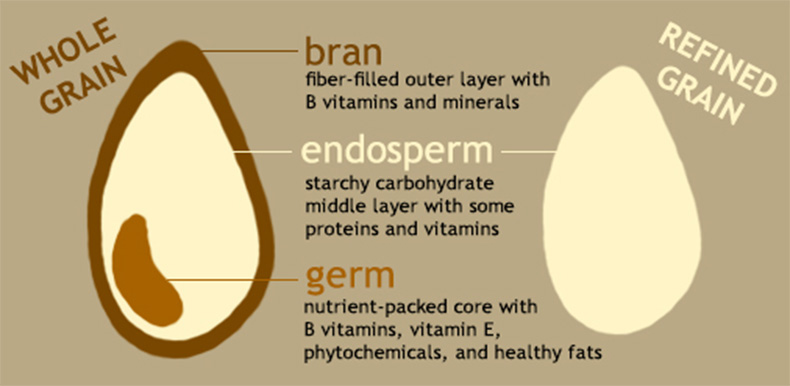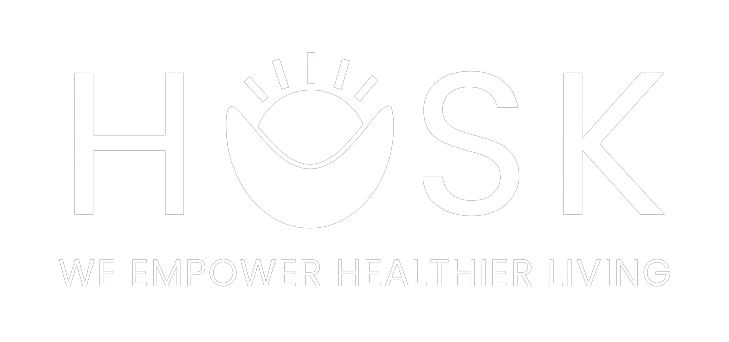
The Truth About Bread
Bread has a bad wrap (pun intended) and this dietitian wants that to come to an end. I have seen enough “new year diets” that recommend the removal of bread from one’s dietary intake. Avoiding bread may be necessary to some, like people with Celiac Disease, allergies and/or intolerances. Fortunately only ~6% of the population is affected by these conditions.1,2,3 Unless you have a specific reason to avoid bread there are no major health concerns with consuming it regularly. Research has actually shown that there are benefits to consuming whole grains. Specifically, incorporating whole grains into one’s diet can reduce the risk of chronic conditions such as type 2 diabetes, heart disease, and some cancers.4 Whole grain bread is a great source of fiber, protein, B vitamins, magnesium, phytochemicals and antioxidants.4
We need to shift the focus onto what kind and how much bread we are consuming.
Whole grain vs refined grains:
Whole grain is the key word we are looking for here. Through a refining process grains are stripped of their bran and germ. The leftover endosperm is milled down to flour and used in different products. Unfortunately the bran and the germ are the powerhouse of the grain. They provide a great deal of vitamins, minerals, and fiber. Occasionally you will find the refined wheat is listed as enriched – which means vitamins and minerals that were lost in the refining process have been added back into the product. Alas, even with this enrichment the whole grain vitamin and mineral levels are still generally greater than the enriched refined grain. Also, even if the flour is enriched, the refined grain will still lack fiber.

What to look for in the store:
Ensure it's whole grain
Unfortunately for us, food manufacturers are really good at marketing. Words like honey wheat, 7-grain, multi-grain, even just the word wheat does not guarantee that the bread product will be a whole grain. Due to this confusion, the best bet is to take a look at the nutrition panel and ingredient list- look for that word “whole”!
Find The fiber
Since the bran and the germ are the fibrous part of the grain, whole grain products should have a higher fiber content than their refined grain counterpart. Aim for 2-3 grams per serving.
Save the salt
Bread is one of the greatest sources of sodium in American’s diet. Manufacturers add sodium to the bread to keep it shelf stable (longer shelf life = not spoiling). Keep in mind the Recommended Dietary Allowance (RDA) for sodium is 2,300 mg. If your bread is ranking in at 400 mg per slice and you make a sandwich (two slices of bread) you will be hitting 800 mg even without the inside portion of the sandwich. 140 mg is considered a low sodium bread. Aim for a brand that has 300 mg of sodium or less.
Scope out the sugar
Ahh sugar, we meet again. Not because I’m constantly adding sugar to food but because manufacturers are putting sugar in EVERYTHING. Now don’t get me wrong. I think sugar has a place and time, but when I think about bread it’s not necessarily something that I need to be sweet. But hey! If you love honey whole grain bread and that makes you happy – go for it. But if you are like me, and feel that you don’t need that extra sugar in your bread, then you want to be careful when shopping. Search for bread with the lowest amount of sugar. The most common low ranges are generally between 2-3 grams. Another option includes doing some investigative work. Take a peek at the ingredients. Since the ingredients are listed in quantity order (i.e. the first ingredient is the largest ingredient) we can assess and analyze how much sugar is truly in the product in relation to the other ingredients. Look for words that signify sugar (honey, molasses, cane sugar, agave, etc). If they are in the first 3-4 ingredients then they are a predominant part of the bread and may not be the best option.
The Main Takeaways
1. Look at the ingredients list – First ingredient is listed as a whole grain (ex. whole wheat, whole oat, whole grain teff).
2. Look for at least 2-3 grams of fiber per serving.
3. Look for the lowest amount of sodium (140 mg or less is considered a low-sodium bread). Look for a brand under 300 mg of sodium per slice.
4. Look for the lowest amount of added sugar (no more than 2-3 grams per serving).
How much bread should I eat?
Portions depend on multiple factors. Age, weight, physical activity, etc. There is no true guide on how much one should eat since there are multiple factors; however, the amount of bread being consumed in one sitting has been increasing through the years. Aim to select a slice of bread that has roughly 15 grams of carbs. This is roughly the same amount of carbohydrate that 1 small piece of fruit has. For an average sized individual, a typical range of carbs for meals can fall between 45-60 grams and snacks between 15-30 grams of carbs.
An example of a proper portioned meal may be: 2 slices of bread (both 15 grams) paired with 3 oz of turkey breast, topped with lettuce, tomato, onion, and ¼ avocado with 1 small apple on the side. The total carbohydrates in this meal tops out around 45 grams of carbs. If the bread in this example had more than 15 grams, say 25 grams than the total carbohydrates in that meal would be 65 grams. You could save a solid 20 grams of carbs (or 80 calories) by selecting a bread that is a smaller serving size.
To sum up- if you like bread, it can absolutely be part of your healthy diet pattern! Look for whole grains, high fiber, lower sugar, and keep portions in mind.
Post written by Emily Rykaczewski MS, RDN, LDN
Emily is a Registered Dietitian in the states of Oklahoma, Minnesota, Florida, Pennsylvania Wisconsin.
This information is intended for general advice and may not be applicable to everyone. Please speak to your Registered Dietitian if you have specific questions or to find out what is best for your individual needs.
Resources
1. Singh P, et al. 2018. “Global Prevalence of Celiac Disease: Systematic Review and Meta-analysis.” Clin Gastroenterol Hepatol. Volume Number E. doi: 10.1016/j.cgh.2017.06.037.
2. Igbinedion S, et el. 2017. “Non-celiac gluten sensitivity: All wheat attack is not celiac” World J Gastroenterol. 23(40): 7201–7210.doi:10.3748/wjg.v23.i40.7201
3. GeneReview. (2008. Updated 2019) Celiac Disease. Available at https://www.ncbi.nlm.nih.gov/books/NBK1727/. Accessed July 17 2019.
4.McRae M., 2017 “Health Benefits of Dietary Whole Grains: An Umbrella Review of Meta-analyses” J Chiropr Med. V16(1)doi: 10.1016/j.jcm.2016.08.008
Challenge
Marketplace
Mental Health
Nutrition
Rewards
HUSK Pro
Company
About
Contact
Press
Blog
© – HUSK | All rights reserved | Privacy Policy |
Terms & Conditions
|
Security & Compliance
|
Status

